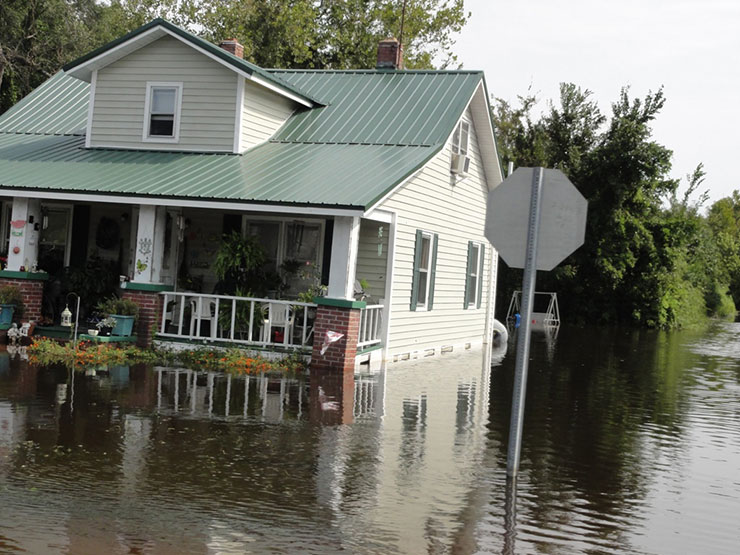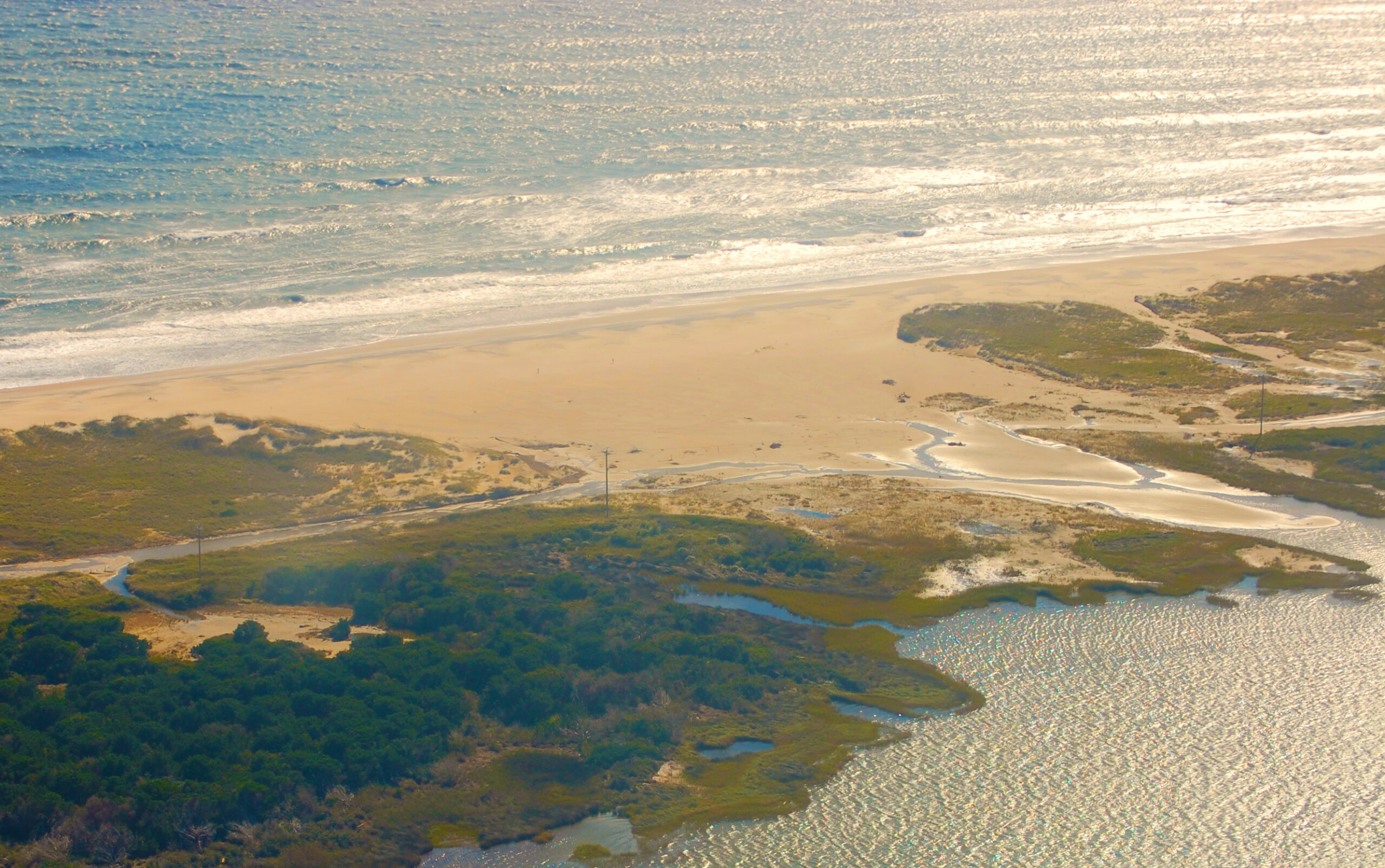Winds of Change: Shrimpers Plan for the Future
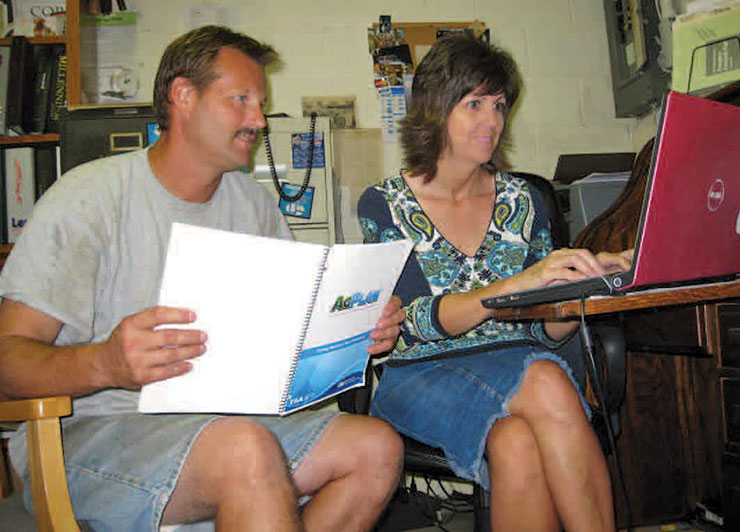
“If there is one thing anyone making a living on the water knows, it’s that you have to be ready for change,” says Captain Dolphus Thompson. “Out on the water, you hear that familiar little roll just as the tide begins to change. You hear it, you feel it and you adapt.”
This Sneads Ferry shrimper understands that knowing how to read shifting tides and winds of change is key to survival. It’s the way of the watermen — using natural instincts to keep them safely afloat in an unpredictable and often risky environment.
But North Carolina shrimpers know it takes additional expertise to stay afloat in an unpredictable and risky global marketplace. To sharpen their business skills and weather the winds of change, many signed on in 2010 with the Trade Adjustment and Assistance for Farmers and Fishermen program.
Administered through the U.S. Department of Agriculture’s Foreign Agricultural Service, TAA provides intense technical training and cash benefits to eligible U.S. fishermen and producers of raw agricultural commodities whose catch or crops have been adversely affected by imports of similar commodities.
For more than a decade, shrimp products from around the globe have flooded the U.S. market, driving down domestic wild-caught shrimp prices and forcing some shrimpers out of business.
Foreign shrimp accounts for about 90 percent of the market, according to the National Marine Fisheries Service. In 2010 alone, shrimp imports to the U.S. market totaled nearly 1.23 billion pounds. Thailand, Indonesia, Ecuador, China, Vietnam and Malaysia are among the top countries of origin for the mostly farm-raised imported shrimp products.
“While domestic shrimp prices have plummeted, fuel and other operating costs have skyrocketed,” says Scott Baker, North Carolina Sea Grant fisheries specialist.
Baker, a member of the TAA Shrimp Commodity Team, is helping USDA and local Farm Service Agencies coordinate outreach to shrimpers statewide. Along with colleagues from Sea Grant programs in South Atlantic and Gulf of Mexico states, he helped develop and deliver the rigorous curriculum participants must complete.
The training is meant to help shrimpers compete more efficiently and effectively with imported products, from employing fuel-saving measures to devising new marketing strategies.
ADAPTING TO CHANGE
For some time now, Thompson — a third-generation waterman — and his wife, Devonda, have been adjusting to unfamiliar winds of change blowing through the industry.
When they learned that shrimpers were eligible for the TAA program, they signed on to find new ways to retool Thompson Seafood as a self-sustaining business for the future.
At one time Thompson and his father, the late Dolphus Thompson Sr., owned two large, offshore shrimp trawlers. High fuel costs, low shrimp prices and shrinking waterfront access figured into an early decision to downsize operations.
Thompson now uses channel nets to shrimp on the New River from their 19-foot skiff. Devonda Thompson manages the business in the “home office,” maintaining records and contacting buyers. Together, they sort and package shrimp for a growing list of customers.
The Thompsons say the TAA process was “user friendly” — from completing the mandatory 12-credit curriculum to developing a long-range business plan with personal guidance from a TAA-certified business consultant.
“The TAA process reinforced that we are on the right track with some of the things already in play, such as using a smaller boat and concentrating on direct sales,” Thompson explains.
“We also learned new ways to market ourselves,” Devonda Thompson adds.
As part of their long-term business plan, they launched a Facebook site. They hope to cultivate specialized markets for their fresh shrimp through the social network, perhaps selling to cooperatives or farmers markets.
The Thompsons are increasing personal networking efforts to reach the growing tourist trade in Sneads Ferry. “Many of them love to do recreational fishing and we can provide bait by selling bycatch fish or live shrimp,” he says.
The initial TAA stipend helped the Thompsons purchase an ice machine and walk-in cooler. They also upgraded their work shed to include a stainless steel sink and work counter.
Once their long-range business plan is approved, they will use the second TAA installment to invest in a commercial freezer. This will give them the flexibility to set aside a portion of their catch for off-season sales.
BUILDING ON TRADITION
For April and Captain Rusty Taylor of Harkers Island, shrimping is more than a way to make a living. It’s a way of life deeply anchored in generations of family tradition.
The TAA program, they say, is helping them build on their heritage.
Her families — the Gilgos and Scotts — are from Portsmouth Island, the historic fishing village that can be traced to Colonial times. His mother’s family — the Lewis clan — came from a long line of island fishermen.
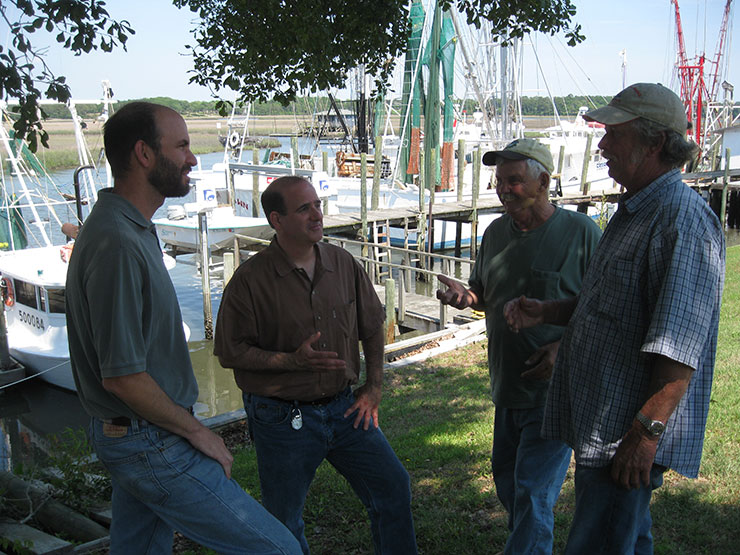
The Taylors admit they were a bit wary when they received the informational letter about TAA. “We thought it might be a scam.
Once we attended the orientation meeting that Scott Baker conducted, we were sold. I am familiar with Sea Grant since I have helped with a number of Fishery Resource Grant projects in the past,” Rusty Taylor says.
“We are thankful that shrimp has been recognized as an important commodity and for its contribution to the overall economy,” April Taylor adds.
The shrimp fishery makes a significant contribution to the state’s annual economic picture, in spite of declining shrimp harvests and prices. According to the N.C. Division of Marine Fisheries, in 2010, 483 commercial shrimpers landed some 5.9 million pounds of shrimp, yielding a dockside value of nearly $10.7 million.
Although Sea Grant’s Baker offered the 12-credit course in person at multiple locations, the Taylors opted to complete the required curriculum online because that method fit better into their erratic work hours.
He operates their fishing boats, while she manages the business end of their seafood venture. And they both help his mother, Patty Jean Lewis Taylor, run Taylor Furniture on Harkers Island.
“We have learned a lot from the curriculum and the process of developing our business plan. The most important lesson? We see that we need to expand to survive,” Rusty Taylor points out.
The Taylors say the TAA program is helping them shore up a future in the business.
For starters, they are using their initial stipend to upgrade electronic equipment on board Miss April, their 35-foot Core Sound skimmer.
They also hope to purchase a commercial-grade ice machine, essential for establishing themselves as dealers.
As part of their marketing strategy, the Taylors are creating a website and a Facebook presence to cast a wider net for new customers. They want to partner with inland farmers markets to sell their wild-caught shrimp. Long range, they hope to invest in a refrigerated truck to ensure the quality of their fresh catch.
SELLING FRESHNESS
With 35 years experience in the Wilmington area, Sherry and Captain John Broome are “first-generation” shrimpers who see the TAA program as an opportunity to adapt and grow the business they love.
Even the name of their boat, Plan B, suggests their willingness to make course corrections necessary for navigating the dynamic environment of the fresh seafood industry.
John Broome got hooked on shrimping years ago when he agreed to help a neighbor for what was supposed to be a short stint as first mate. Before long, he was working double duty as a full-time federal law enforcement agent and as a full-time shrimper. Sherry Broome’s role as business partner expanded accordingly, along with her career in education, from high school Latin teacher to “teachers’ teacher” with the N.C. Department of Public Instruction.
Now retired from his federal job, John Broome devotes all his time to shrimping. Together, the Broomes completed the TAA online curriculum and worked with a TAA business consultant to develop short- and long-range business plans.
With their long-term business plan complete, they are moving ahead to implement a number of innovative ideas to expand their business, including a website to launch their Plan B Bounty marketing campaign. Their message is: “Fresh is Best.”
He employs small-batch fishing methods to further ensure the quality of the catch. “I do short drags and get the shrimp into ice immediately,” John Broome explains.
“We also are developing biodegradable packaging. And we have a number of environmentally friendly practices in place, including reducing bycatch mortality and decreasing engine pollution,” says John Broome, who has partnered with Sea Grant to conduct several FRG projects.
The Plan B Bounty website also will contain recipes, tips for safe handling and information about the benefits of eating wild-caught shrimp.
The Broomes hope to generate a demand for their product as far inland as Raleigh, without forgetting their faithful local customers who rely on them for same-day fresh shrimp.
HELPING MOM AND POP BUSINESS
For his part, Gary Bullen is happy to help these unique “mom and pop” enterprises succeed. Bullen, a certified TAA business planning consultant with expertise in North Carolina agricultural economics, is working with about 60 North Carolina shrimping families.
“For most, it’s their first time working with a federal program, unlike crop farmers who have a long history with USDA programs. I walk them through the process while they patiently teach me how they do their work,” he says.
“One difference between farming and fishing is the relationship with consumers.
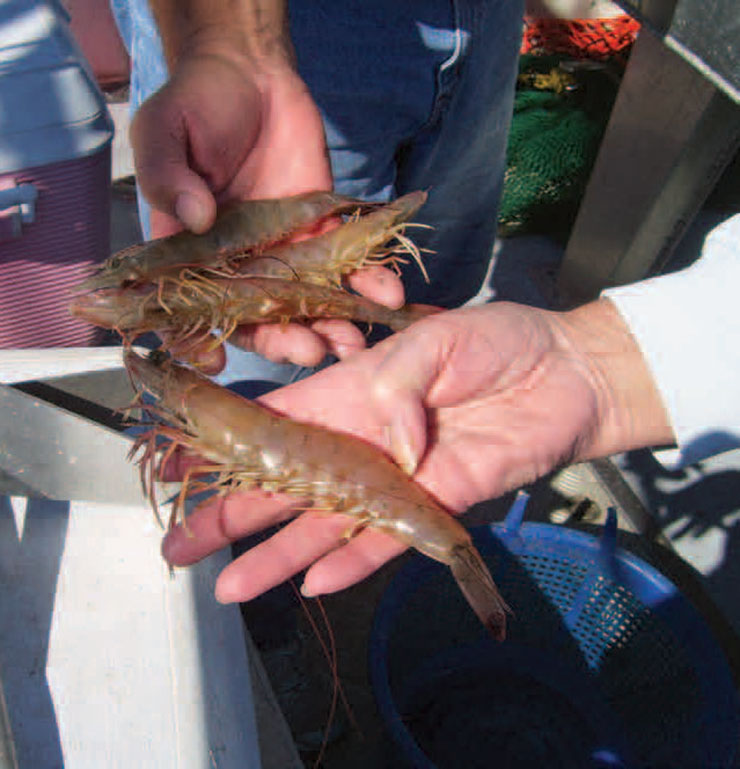
Consumers can see farmers working crops in the field and often meet farmers face-to-face at roadside stands or markets.
“On the other hand, fishermen are the unseen producers. They live in small communities that are off the beaten track. Marketing exposure can help educate the consumer about who fishermen are and why consumers should buy only their ‘crop’ of fresh North Carolina shrimp,” Bullen explains.
He says the TAA planning process is generating a lot of great ideas among participants as they consider how to carve out niche markets to survive in the global seafood industry. Most see the potential for expanding their business by creating personal and product identities through the Web and Facebook.
Some shrimpers will use their TAA incentive to invest in coolers or freezers that will enable them to safely transport or store excess catch for off-season sale, Bullen says.
“Some older clients say they are ready to slow down. They are developing business plans that include selling their large boats, buying smaller boats and transitioning to part-time shrimping,” he adds.
“The reality is that there isn’t a one-size-fits-all business plan. Each situation is different. It may be that they will move slowly around the edges toward gradual change,” Bullen notes.
The TAA program is a lifeline for many shrimpers, says Dennis Fiess, a TAA business planning consultant from the state of ashington assigned to work with 25 North Carolina shrimpers.
“The TAA business planning process is all about exploring and investigating possibilities,” Fiess says.
Still, putting a business plan down on paper at first seems daunting to some clients. “But we meet. We talk. I assure them we can do this together. We keep on talking. You can see the wheels turning. Then, the light goes off when they realize they have just told me their business plan.”
He says participants find that the TAA program provides a worthwhile learning process. “It gets them to thinking about alternatives, cash flow principles, budgeting and important risk-management issues,” Fiess points out. “No, there is no pot of gold at the end of the rainbow, but there is a TAA stipend to help jump-start the implementation of fresh ideas.”
PROMOTING FRESH CATCH
It’s not surprising that North Carolina Sea Grant was tapped for a role in developing and delivering the TAA program for shrimpers.
Baker, along with Sea Grant colleagues Barry Nash and Sara Mirabilio, are recognized nationally for ongoing efforts to connect local seafood producers with consumers.
“It’s a logical fit for Sea Grant extension to be a part of the TAA program. Very few groups are both knowledgeable of the industry and have experience developing and delivering technical training to this audience,” Baker points out.
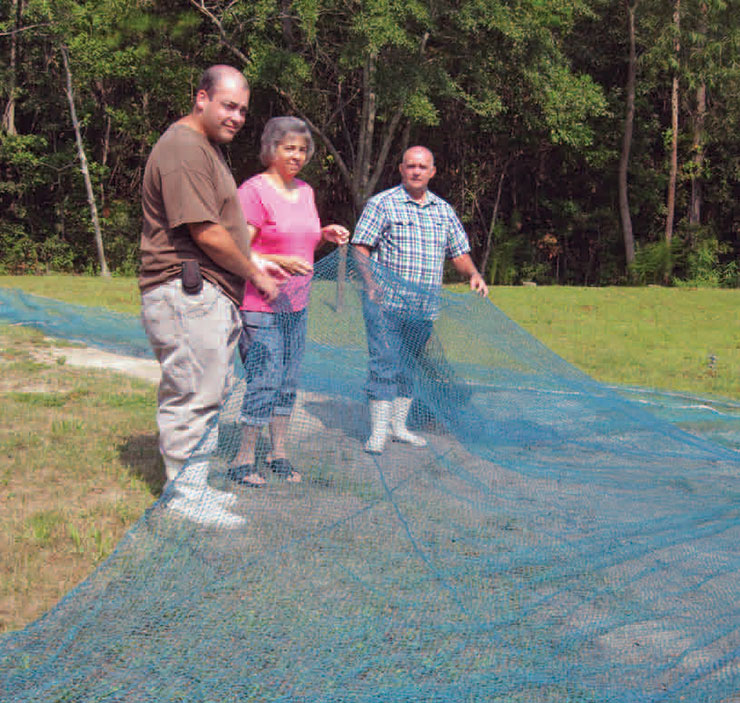
In fact, when Baker helped write the “Shrimp Marketing Opportunities” workshop — part of the mandatory 12-credit hour TAA curriculum — he drew from experiences with local branding activities. These include Sea Grant-supported Carteret Catch, Brunswick Catch, Ocracoke Fresh and Outer Banks Catch programs.
Nash, who has helped present the TAA marketing workshop, says the good news for shrimpers is that there is high consumer demand for local, wild-caught shrimp. Surveys conducted at seafood festivals from Dare to Brunswick counties since 2005 show that consumers prefer — and are willing to pay more for — local shrimp, he says.
He urges shrimpers to join local “Catch” programs and market their local, fresh-caught product to set them apart from foreign competition.
Nash also suggests that they work with an experienced designer to create a website to promote their business. In his how-to brochure, Using the Internet to Enhance Direct Market Sales of Seafood, Nash equates not having an Internet presence to trying to conduct business without a telephone.
Besides offering a primer in marketing methods, the TAA program provides additional tools for competing in the global marketplace.
“An added benefit to Sea Grant’s inclusion in the TAA program is that it has increased our ability to reach out to members of the industry that we may not have worked with before. I see the Sea Grant and TAA partnership as a win-win situation,” Baker notes.
“The TAA program requires participants to take a detailed look at the industry as a whole, as well as their individual business situations. A more informed industry will be better able to adjust to current trends and explore new opportunities,” he adds.
Only time will tell if the boost from TAA will be enough to help save the domestic shrimp industry. But Baker is optimistic.
“It only takes one or two enterprising fishermen to shake things up. And if they are successful, others will follow in their footsteps,” Baker says.
TAA AT A GLANCE
The Trade Adjustment Assistance for Farmers and Fishermen was first established under the Trade Act of 2002 and expired on Dec. 31, 2007. Although shrimp was recognized as a commodity, the eligibility formula was complicated and few shrimpers received benefits.
The American Recovery and Reinvestment Act of 2009 reauthorized and modified the program and appropriated $90 million for the 2010 TAA cycle. It authorized $22.5 million for the first quarter of 2011.
The Florida-based Southern Shrimp Alliance, working with Sea Grant programs and other federal and state agencies, was instrumental in securing the eligibility of shrimp from the South Atlantic and Gulf of Mexico. Other commodities covered by the current TAA program include catfish, lobster, Alaskan cold-water shrimp, asparagus and Maine wild blueberries.
According to SSA , more than 4,000 shrimpers from the Southeast and Gulf states applied for training and cash benefits through their local Farm Service Agency, which is responsible for determining individual eligibility and making payments. Nationally, the Center for Farm Finance Management at the University of Minnesota oversees the TAA program — developing curriculum and business plan guidelines, and certifying and assigning business planning consultants.
Under the funding guidelines, those applying before Sept. 24, 2010, will receive up to $4,000 for attending an orientation workshop, completing a 12-credit curriculum and writing a description of how they will change their business based on what they learn from the workshops.
They are eligible to receive an additional $8,000 for developing and implementing an approved long-term business plan.
Those applying after Sept. 24, 2010, will receive no more than $2,913 for completing the four-step program, including long-term planning.
There are 169 state shrimpers in the initial category and 13 in the latter. If all 182 individuals complete the program, North Carolina shrimpers stand to receive more than $2 million in benefits.
This article was published in the Holiday 2011 issue of Coastwatch.
For contact information and reprint requests, visit ncseagrant.ncsu.edu/coastwatch/contact/.
